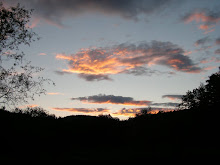Photography was once an expensive hobby reserved for an elite few. With the invention of the digital camera amateur photography exploded across the globe. From tourists on the Great Wall of China to the business person in the high-rise penthouse in New York; from the hip dance clubs of LA to the backyard rose gardener, the digital camera revolutionized our world. With a few simple clicks, and a computer, we can share or hobbies and interests with a global community.
With the expansion of the digital cameras industry prices dropped further opening the doors of opportunity for the common individual. Yet with this expansion came a flood of choices; each company certain that their product is the best. So, how can you be sure you are getting what you need? This article will walk you through the process and help you feel comfortable with your camera purchase.
My first camera was an Hewlett Packard model. It was a Christmas time Walmart special; just down-right cheap. It had few frills and took only a handful of quality pictures before I had to down load them. But it was the start I needed. Now I've upgraded, but not to an overly expensive model. You to can snap some great quality nature photos with a good mid-range camera.
What to look for in a camera
Here are a few qualities to look for in a camera used for nature photographs.
- Quality Name Brand: Quality, which may cost slightly more in the beginning will be much less expensive as your camera is exposed to the bumps of everyday use. Choose quality first.
- Runs on standard batteries (AA, AAA): Common battery sizes are easier to get, especially in a pinch. Specialty batteries require specific chargers or charging cables. Once they ware out they are more expensive to replace. Moreover, as the camera models change over time the production of older batteries will halt. Look for a camera that uses common battery sizes like AA or AAA.
- Computer interface cable: If you are buying a new digital camera, as apposed to used, it should come with a computer interface cable; this allows you to download pictures to your computer without removing flash card (which stores your photographs). Make sure your camera comes with this cable.
- Simple photo editing software: A simple photo editing program will enhance the quality of your photos. With the right program you can turn a common photograph into a work of art with unbelievable ease.
- Optical zoom (not just digital): Optical zoom offers better quality then digital zoom. Many cameras offer a combination of both. Look for a camera with optical zoom first; if it has digital zoom as well that's a bonus.
- Flash control: Simple flash control with a click of a button enhances you photographic experience. Often non-mechanical lighting enhances the ambiance of nature photography; while a flash can cast unwanted glare.
- Macro capability: Macro setting allows you to take extreme closeups and capture the fullness of color beauty. This setting work superbly when photographing roses or other flowers.
Researching
A little bit of research will give you years of happiness snapping. Make a list of the major mane brands in photography. Names like Canon, Fuji, Minolta, Kodak. You may be able to think of a few more. Now search for these name brand cameras online. Pick a couple cameras that are within your price range from each brand. Most of the features listed above come on these new cameras, but double check just to make sure. Read customer comment and find any customer ratings. Disregard the top (best) 10% and bottom (worst) 10% of the ratings because there are some persons who simply love or hate whatever they get. Look for comments that explain why a person likes or dislikes a particular camera. Jot down a few models that you like.
With this list in hand, grab a couple of friends and browse a few camera shop and electronics stores. Handle a few cameras and find what feels best to you. A reputable salesperson can explain the pro's and con's of each camera. And, they should be able to cover any extra features. Remember: make this a fact finding mission... don't purchase at this time. Your friends are there to remind you of this.
Once your research is done you should have a one or two models that jump to the top of your list.
Purchasing
Although you can buy a camera anytime during the year, I've found the best time to purchase is around Christmas. The market is flooded with all different makes and models and each company competes for your cash with special sales.
Basically there are 5 places to purchase: camera shop, electronic boutique/store, department store, online store, and online auction. Steer clear of department stores unless they have the exact model you were considering. Often they offer lowest quality with their lower prices. (You don't want your camera dieing when you are taking that 'once-in-a-lifetime' photograph.)
Any of the other choices are worthy places to get your quality camera. If you have a chance, check out the online auctions; if you catch the right one you could cut your costs significantly. However, beware and don't get caught up in the bidding frenzies and go over your budget.
No matter what time of year you are purchasing, if you have done your research, you can find a quality camera at an affordable price. Remember: before you actually buy, set your budget price; and remember to set a budget for the little extras; they add up. Things like:
- Camera Bag
- Tripod
- Lens Cleaner
- Extra Batteries
- Extra Memory Card
- Insurance
In conclusion, keep it simple! You want to get a good quality camera, but don't belabor yourself with getting the perfect camera. Enjoy your time researching and celebrate once you have purchased. Welcome to the world of amateur nature photography.


No comments:
Post a Comment